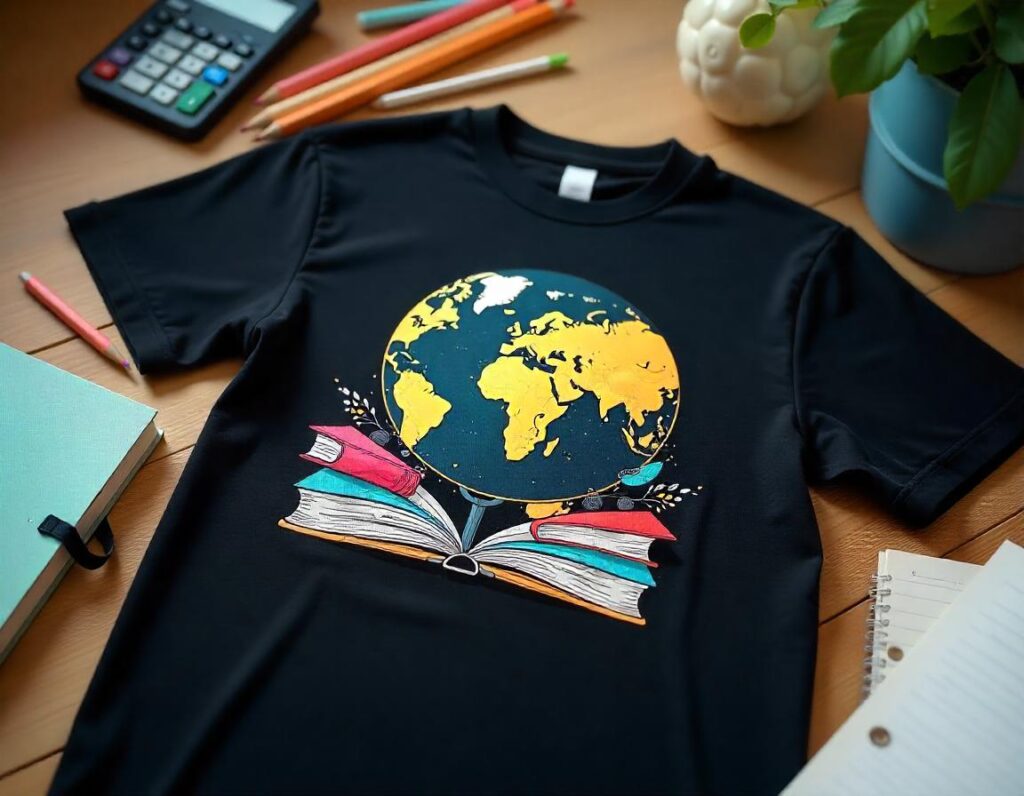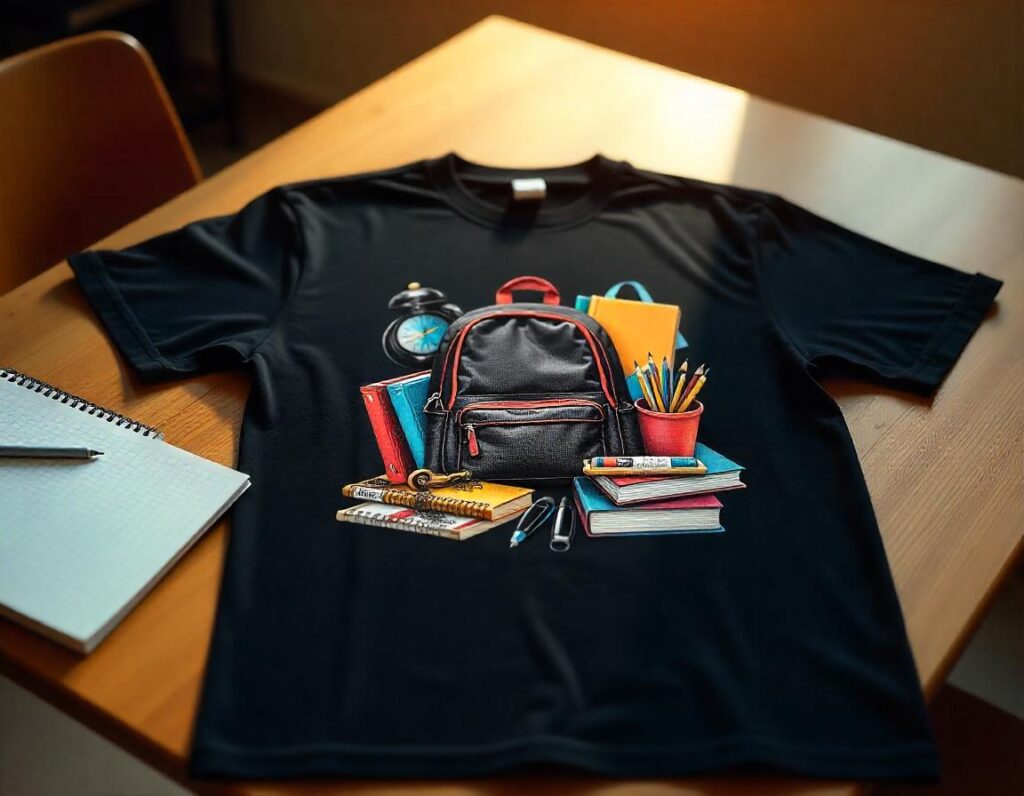Are you ready to embark on an exciting journey into the world of DIY DTF printing? Direct to Film (DTF) printing is becoming a favorite among creative minds and entrepreneurs seeking to produce eye-catching designs on various fabrics. With the right DTF printing supplies and a few essential techniques, you can achieve vibrant, lasting prints. In this guide, we will explore everything from how to do DTF printing to the best DTF films and the quintessential DTF ink and powder required for stunning results. Join us as we unlock the secrets to mastering this innovative printing method!
Entering the realm of direct-to-film printing opens up a new landscape of textile creativity. Many art enthusiasts and small businesses are now exploring this fresh printing technique that allows for high-quality designs printed directly on fabric. In this overview of DTF processes, we will delve into the essential components needed to succeed, such as specialized DTF film and adhesive powders. Moreover, we will provide insightful DTF printing tips to help you navigate this relatively new printer technology. Whether you’re a hobbyist or a business owner, understanding how to effectively use these modern materials will enhance your design capabilities.
Understanding the Basics of DTF Printing Materials
To embark on your journey into the world of DIY DTF printing, it’s essential to understand the significance of the materials used in this process. The key components include the DTF printer, film, ink, and adhesive powder. Each of these supplies plays a pivotal role in the quality and durability of your final products. Selecting the right DTF printer is a crucial first step; many hobbyists opt for modified inkjet printers due to their versatility and affordability. Brands like Epson are particularly favored for their reliability, making them a preferred choice among DIY enthusiasts.
The DTF film you choose can significantly influence the outcome of your prints. A high-quality PET film designed specifically for DTF applications ensures that your designs adhere properly and maintain their vibrancy after the transfer. It’s equally important to select the right DTF ink. Pigment-based inks are commonly recommended as they provide bright colors and exceptional durability. Together, these materials form the foundation of successful DTF printing, creating a fantastic canvas for your creativity.
Step-by-Step Guide: How to Do DTF Printing Effectively
Once you have gathered your essential supplies, the next step is to learn how to do DTF printing effectively. The process begins with preparing your design using graphic design software, ensuring that it aligns with your printer’s specifications. After your design is ready, print it onto the DTF film using your chosen DTF printer. It’s crucial to pay attention to the print settings; optimizing them according to your film and ink can greatly enhance your print quality. This may involve selecting a higher DPI for sharper results.
Following the printing process, you will need to sprinkle hot-melt adhesive powder onto the wet ink of your printed film. This adhesive will bond the design to the fabric during the heat transfer phase. Preheat your heat press to the recommended temperature based on the fabric type you are using. Then, place a protective sheet over your print before pressing it onto the fabric. The entire process requires practice to perfect, but understanding the steps involved will help you achieve beautiful results.
Best Practices for DTF Printing: Tips for Success
To ensure your DIY DTF printing endeavors yield stunning results, it’s essential to follow best practices. One of the primary tips is to conduct test prints before you dive into larger projects. Test prints allow you to evaluate color accuracy, adhesion, and overall quality without wasting valuable materials. This practice is especially important when using new film or fabrics, ensuring that your final prints meet your desired standards.
Another critical aspect is mastering the heat press technique. The temperature and pressure settings are vital; different materials may require adjustments to achieve the best results. Always refer to the manufacturer’s instructions and consider doing a few test transfers to refine your approach. By paying attention to these details and refining your techniques, you can enhance the durability and appearance of your DTF prints.
Choosing the Best DTF Film for Your Projects
The choice of DTF film can significantly impact the quality of your prints. When selecting the best DTF film for your projects, look for products specifically designed for DTF applications, featuring high-quality PET material. This type of film is designed to withstand the heat involved in the transfer process while adhering properly to a variety of fabric types. Avoid generic films not created for DTF as the results can be unpredictable and may lead to poor adherence or faded colors.
Experimenting with various film brands can also help you determine which produces the best results for your specific needs. Some films offer better flexibility and opacity, while others may provide bright colors more effectively. Thoroughly reviewing customer feedback and exploring recommendations from the DTF printing community can guide you toward the best DTF film that will elevate your printing experience and yield impressive outcomes.
Essential Tips for Using DTF Ink and Powder
Choosing the right DTF ink and powder is crucial for achieving vibrant and durable prints. Pigment-based DTF inks tend to deliver excellent color vibrancy and longevity, making them a top choice for many DIY printers. However, not all inks are created equal. It’s essential to select inks specifically formulated for DTF applications in order to ensure compatibility and performance. Researching brands that are well-reviewed by the DTF community can help you find reliable options that give you peace of mind.
In addition to selecting the right ink, mastering the adhesive powder usage is equally critical. The hot-melt adhesive powder bonds the printed design to the fabric during the heat transfer process, ensuring durability. It’s important to sprinkle the powder evenly on the printed film while the ink is still wet to achieve the best adhesion. Experiment with varying quantities of powder and adjust based on your specific fabric and design for optimal results.
Mastering the Heat Press for DTF Printing
The heat press plays an integral role in the DTF printing process, directly affecting the quality of your final product. Choosing a high-quality heat press machine is essential; ensure it has adjustable temperature and pressure settings to cater to different fabric types. Some fabrics require specific heat settings for optimal transfer, so having a versatile heat press will allow you to experiment with various materials without compromising your prints.
Understanding the proper technique when using a heat press can truly enhance the outcome of your prints. Always use protective sheets like Teflon or silicone to cover your prints during the process. This protects the design from sticking to the heat press and helps distribute heat evenly, which is crucial for a successful transfer. By practicing with your heat press and adjusting your settings based on results, you will greatly improve the quality of your DTF prints and ensure satisfaction in your projects.
Frequently Asked Questions
What are the essential supplies needed for DIY DTF printing?
To embark on DIY DTF printing, you will need several essential supplies: a DTF printer, high-quality DTF film, pigment-based DTF ink, hot-melt adhesive powder, a reliable heat press machine, protective sheets, and graphic design software. These tools ensure you achieve vibrant prints that last on various fabrics.
How do I start DIY DTF printing and what tips can help?
Starting DIY DTF printing involves gathering your supplies, such as a DTF printer, film, ink, and heat press. To achieve stunning results, optimize your print settings, conduct test prints to gauge quality, master your heat press technique, and consider fabric pre-treatment for better adhesion. Continuous learning and experimentation are also vital for refining your skills.
What is the best DTF film to use for high-quality prints?
The best DTF film for high-quality prints is a PET film specifically designed for DTF printing. This type of film is engineered to handle heat effectively, ensuring that the vibrant colors of your designs adhere properly to fabrics and maintain their clarity after multiple washes.
What type of ink is recommended for DIY DTF printing?
For DIY DTF printing, it is recommended to use pigment-based DTF inks. These inks provide vivid colors, excellent durability, and compatibility with DTF printing processes, ensuring that your designs look great and last long after application.
Are there specific DTF printing tips to improve the adhesion of the print on fabric?
Yes, several DTF printing tips can improve print adhesion on fabric. Always use hot-melt adhesive powder during the transfer process, ensure proper heat and pressure settings on your heat press, and consider pre-treating fabrics if necessary to enhance ink adhesion and color vibrancy.
How can I find the best resources for learning DIY DTF printing techniques?
To find the best resources for DIY DTF printing techniques, explore community-driven websites like Reddit, watch tutorials on platforms like YouTube, engage in online forums, and follow social media accounts dedicated to DTF printing. These resources can provide valuable insights, tips, and troubleshooting advice from experienced practitioners.
| Key Component | Description |
|---|---|
| DTF Printer | A specialized printer, often a modified inkjet, for DTF printing. |
| DTF Film | A high-quality PET film designed to withstand heat and ensure proper adhesion to fabrics. |
| DTF Ink | Pigment-based inks that provide vivid colors and durability. |
| Adhesive Powder | Hot-melt powder used to bond the printed design to the fabric. |
| Heat Press | Machine to transfer designs with adjustable temperature and pressure. |
| Protective Sheets | Teflon or silicone sheets to protect prints during heat pressing. |
| Software | Graphic design software for creating and preparing designs. |
Summary
DIY DTF printing opens up a vibrant avenue for creativity and artistic expression. This innovative method allows individuals to print stunning designs onto various fabrics seamlessly. By understanding the essential supplies required—like a reliable DTF printer, high-quality films, and customized inks—and mastering helpful techniques, you can elevate your printing skills. It’s recommended to experiment with different settings and fabrics for optimal results while staying updated with current trends and community insights. Embrace the journey of DIY DTF printing, and you will unlock limitless possibilities for creating professional-grade prints.



